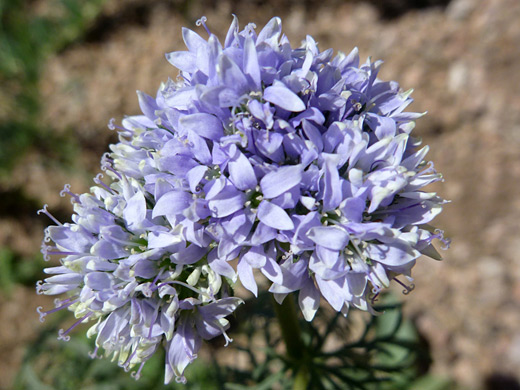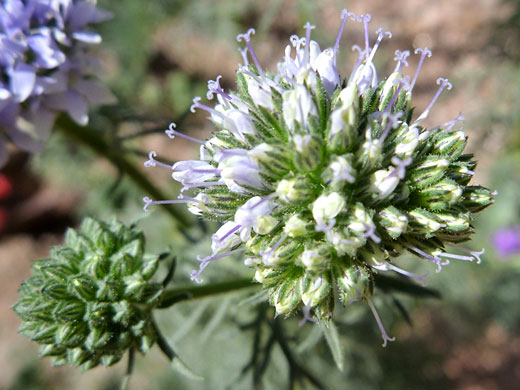Common names:
Bluehead gilia, globe gilia, blue field gilia
Family:
Scientific name:
Gilia capitata
Main flower color:
Range:
The Pacific states, plus small areas of Arizona, Idaho, Utah and New Mexico
Height:
Between 4 and 35 inches
Habitat:
Open areas, generally sandy or rocky locations, up to 6,500 feet
Leaves:
Pinnately divided once or twice into pointed, linear lobes, around half an inch long
Season:
April to June
Gilia capitata produces stout, leafy stems topped by spherical, terminal clusters of 25 to 100 white to blue flowers. Leaves and stems are usually glandular, with a dense coating of short, sticky hairs. Leaves are pinnately lobed; those around the base and along the lower stems are divided into several dozen narrow pointed lobes, while those higher up have just a few lobes, generally longer.
Each flower is supported by a green, lobed calyx, and consists of five linear to oblong petals, five slightly protruding stamens and a longer, two-lobed style. The corolla tube is entirely enclosed by the calyx.
There are many subspecies, differing in corolla length, corolla color, hairiness, cluster width, petal shape and petal width.
Each flower is supported by a green, lobed calyx, and consists of five linear to oblong petals, five slightly protruding stamens and a longer, two-lobed style. The corolla tube is entirely enclosed by the calyx.
There are many subspecies, differing in corolla length, corolla color, hairiness, cluster width, petal shape and petal width.
All Contents © Copyright The American Southwest | Comments and Questions | Contribute | Site Map



